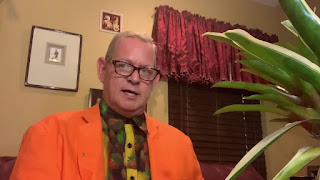WHY I DO THIS BLOG ON RARE PLANTS
According to the report “State of the worlds plants”by researchers at the Royal Botanic Gardens, Kew, in the United Kingdom, there are about 391,000 species of vascular plants currently known to science. Of these, about 369,000 species (or 94 percent) are flowering plants.
By scanning through several plant databases, including the the Plant List, the International Plant Names Index and the World Checklist of Selected Plant Families, the team found that 391,000 vascular plants are currently known to science. Moreover, about 2,000 new plant species are discovered or described every year. Many of these newly described are already on The endangered list
#plantaddict #rareplant
#plantgeek
I miss traveling around the world and lecturing
My new gorgeous Sterling articulated horseshoe pin
It came from the talented and genius people at Luna Parc
Two videos on sterilizing Spanish moss
The easy and complete way to rid Spanish moss of all insects and insect Eggs
Monotropa hypopitys
Monotropa
Monotropa is a genus of three species of herbaceous perennial flowering plants that were formerly classified in the family Monotropaceae and presently are classified in Ericaceae. They are native to temperate regions of the Northern Hemisphere and are generally rare. Unlike most plants they do not have chlorophyll and therefore are non-photosynthetic; rather, they are myco-heterotrophs that obtain food through parasitism on subterranean fungi. Because they do not need any sunlight to live, they can live in very dark sites such as the floor of deep sylvae.
The hundreds of new miniature bromeliads I divided
The hundreds of new miniature bromeliads I divided
My Various media sites …each one has slightly different content
WHY I LECTURE ON RARE PLANTS....UNEDITED
PLEASE SUBSCRIBE ON MY BLOG ..CONTENT IS MORE ADVANCED AND WHEN I HAVE ENOUGH FOLLOWERS..I. WILL UPLOAD LONGER LECTURES AND PRESENTATIONS
THANKS FOR ALL FOLLOWING ON VARIOUS PLATFORMS
PLEASE SUBSCRIBE HERE ...CONTENT IS MORE ADVANCED AND WHEN I HAVE ENOUGH FOLLOWERS..I. WILL UPLOAD LONGER LECTURES AND PRESENTATIONS
Happy gay pride… Here’s some images from the past and current pictures to celebrate
#plantaddict #bromeliads #plantgay #orchids #neoregelia #epiphyte #pride
#pride #gayhot #lgbtq
Video topics coming soon
Topics I’ll be covering soon they are all researched and photographed… But the presentations have to be cut and perfected.
Topics include
Obtaining cultivating and processing coffee arabica growing and drinking the coffee you Grow.
Obtaining cultivating and processing camellia (thea)chinensis and how to process the plants leaves into black green and white tea that you can brew.
How to candy orchids and other edible flowers
Step by step instructions.
A mega cachet regarding the common myths about growing bamboo
10 amazing unknown facts about bamboo
And my actual favorite species and experiences.
A presentation on several rare and bizarre species as soon as I can obtain more plants.
The species are
Dorstenia
Ceropegia
Amorphophallus
Catasetum orchid
Ant plants -hydnopytum and dishidia
A step by step class on how to mount epiphytic plants. I will do this class in installments
A list of Bromeliads species (that would be awesome if they were crossbred)My favorites and why they are my favorites
The videos will post to my YouTube and blog… Because they are longer presentations... I will however let my followers on Facebook Instagram and TikTok know.

















